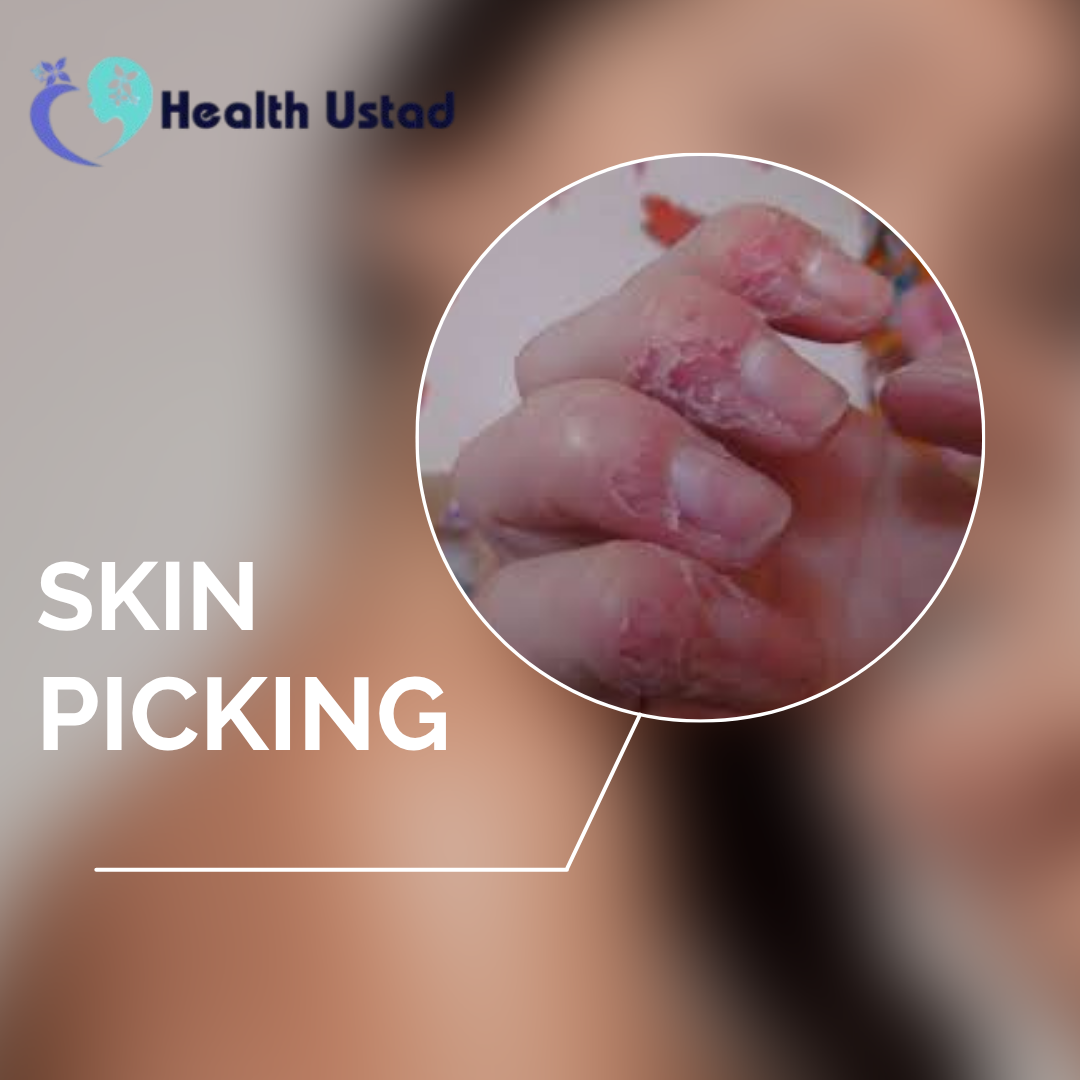Excoriation Disorder

Excoriation or Skin Picking Disorder: Understanding Treatment and Role of NAC for Skin Picking
Excoriation disorder is in the category of obsessive-compulsive disorder. It is also called skin-picking disorder. Skin picking is a body-focused obsession; it is like “trichotillomania or hair-pulling” disorder. People with skin-picking disorder cause visible damage to their skin, like bleeding, wounds, and sometimes infections as well. Sometimes people don’t understand the causes of the skin-picking disorder. After the diagnosis from mental health experts, sometimes they use NAC for skin picking. NAC is basically an amino acid supplement that can manage symptoms of Excoriation.
In this article, we will tell you the symptoms of Excoriation. Its causes, and its treatment. We will explain to you the therapeutic therapies and scientific evidence behind NAC for skin picking.
What is Excoriation Disorder?
Excoriation disorder belongs to the category of obsessive-compulsive spectrum disorder. It is also called skin picking or dermatillomania. As OCD is related to obsessions, in skin-picking disorder, you may have an urge to scratch, pick, or squeeze skin. Which leads to significant psychological and physical distress.
What are the Symptoms of Skin Picking Disorder?
People suffering from skin-picking disorder may have an uncontrollable urge to scratch or pick their skin. This uncontrollable scratch leaves lesions or infections on the skin. As we know that mental health professionals use DSM-5-TR for the diagnosis of psychological problems.
The DSM-5-TR diagnosis criteria for Excoriation or skin picking disorder are:
Diagnostic criteria A.
Frequent urge to skin-pick, which causes skin lesions or bleeding.
Diagnostic criteria B.
Repetitively trying to decrease or stop the urge to skin-pick.
Diagnostic criteria C.
Frequent skin-picking urge causes significant distress clinically. It also causes distress in social and emotional functional areas.
Diagnostic criteria D.
Skin picking is not due to the effect of any substance or any other medication.
Sometimes these excoriation symptoms overlap with other body-focused repetitive behaviors. Some of the body-focused repetitive behaviors, such as hair-pulling and nail-biting, make the diagnosis of excoriation disorder more complex.
What are the different Treatments for Excoriation?
Mental health professionals use different treatment methods to treat excoriation disorder. Many therapeutic techniques are used for managing excoriation disorder. Some therapies are mentioned here for you:
- Cognitive Behavioral Therapy (CBT):
CBT is the most used treatment for excoriation disorder. Excoriation disorder is due to unrealistic obsessions. And CBT helps individuals recognize thought patterns and triggers that cause skin picking. ERP is a specific preventive technique that provides exposure to triggers. The client is trained to resist these urges. Different coping techniques are taught to the client to overcome Excoriation.
- Medications:
Sometimes mental health experts prescribe selective serotonin reuptake inhibitors. SSRIs, are used to treat excoriation disorder.
- Lifestyle Adjustments:
Different stress management techniques are taught to clients to treat excoriation disorder. Some life adjustment techniques, like exercises and mindfulness therapeutic techniques. These are planned for the client by their mental health consultant to treat excoriation disorder.
While these methods help treat excoriation disorder. There is now an increase in NAC for skin picking as the most effective treatment for excoriation disorder.
NAC for Skin Picking: How does it work?
As we discussed earlier, mental health professionals use NAC for skin picking. NAC is N-acetylcysteine, which is an amino acid derivative. NAC has been used as a supplement for liver health and detoxification. But recent researches suggest that it is effective for the treatment of excoriation disorder.
NAC regulates glutamate, which is a neurotransmitter. Glutamate is involved in the compulsive behaviors of a person. As glutamate is deregulated, it will cause body-focused repetitive activities.
NAC Required Dosage:
Mental health professionals check the effectiveness of NAC for skin picking. It was checked in a small case report. This case study showed that after intake of NAC supplement, the urge for skin picking was reduced. Previous studies by mental health professionals showed the required dose for NAC ranges from 600 mg to 2400 mg per day.
- 600 mg:
Some individuals report that 600mg of NAC is an adequate dose for treating skin picking, but a high dose can help with more clinical improvements.
- 1200–2400 mg:
Research studies showed that significant improvements were observed in individuals with high doses of NAC. High doses will reduce the frequency of skin picking.
Side Effects of NAC
Like other supplements, NAC for skin picking can also have some side effects. In research, some NAC side effects reported were headaches, gastrointestinal issues, and allergic reactions. But as compared to other medications prescribed by mental health professionals for obsessive-compulsive disorder, NAC has mild side effects.
But self-prescription for NAC for skin picking is not recommended. You must take the dosage after consulting with a mental health professional or any physician.
Comparison of Excoriation with Other Disorders:
Excoriation disorder has symptoms overlapping with obsessive-compulsive disorder and hair-pulling disorder. As symptoms are overlapping, mental health professionals use NAC for skin picking and for other related conditions as well. NAC can be used to treat:
- Hair-pulling disorder (Trichotillomania):
Some clinical research has shown that the use of NAC can reduce the urge to pull hair as well.
- Obsessive-compulsive disorder:
Some patients showed relief in compulsions after using NAC.
How NAC Works? The Neurochemical Link
NAC is N-acetylcysteine; it works as an SSRI. NAC affects glutamate, as excess glutamate in the skin is linked with hyperarousal and compulsive behaviors. NAC maintains the balance of glutamate secretion in the body.
NAC also works as an antioxidant in the body. NAC reduces oxidative pressure in the brain. This dual mechanism of NAC helps the patient achieve significant improvement in compulsive urges and emotional regulation.